Some of the Greatest Objects to Look for in the Summer Sky
Well if you live anywhere North of latitude 0 you may have noticed it's gotten rather warm these past couple months. But don't be alarmed, I'm here to confirm for you that it's merely the season of Summer just doing its thing.
That being said, for someone like me, seasons are half about the weather, and half about what part of the cosmos lies above from dark til 1 am every night. So now that we're in late July and the Summer sky is reaching its prime state where the bulk of the stars are directly overhead, I've comprised a list of some things that are out there to see, telescopes may or may not be required.
-Non-telescope viewed things
Meteor showers are good place to start, now I'm a bit late here so delta aquariids already passed, but who cares it's not a very good one anyway.
One shower active at the moment is Alpha Capricornids, although it doesn't put out that many meteors, possibly 5 per hour at its best near the very end of July, the meteors in this one can be remarkably bright. So look to the Capricornus constellation if you want to catch one.
But the real show comes later with the Perseids Shower, the main area of origin being towards the Perseus constellation. This one can see up to 100 Meteors an hour at its Peak on August 10-13th. So look out for it.
Beyond that the next shower doesn't occur until late September, but Perseids is easily one of my favorites just behind Geminids, which comes in the Winter.
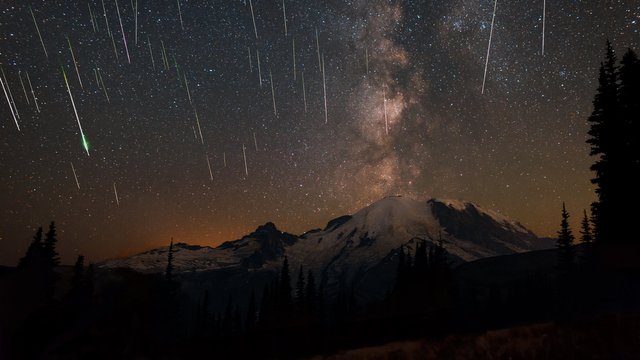
(Long Exposure of Perseids taken by Matthew Dietirich)
Stars and Constellations are another major aspect of the different seasons. They're the indicators of passing time, they can be used as a reference to find things hidden from the naked eye. Perhaps the most important part of the Summer sky is the Summer triangle, which, like the Winter Hexagon, indicates that Season's presence.

(Photo by Bob King)
The leftmost bright star, wedged in the galactic band, is Deneb. A frighteningly powerful and distant star yet the dimmest appearing in the Triangle. The Brightest star in the upper-middle is Vega, a signature of the Summer, the fifth brightest star of all, and the most studied star behind the sun due to its rather close proximity and interesting stellar system. And lastly in the lower middle you have Altair, the closest of the bunch, and one of the closest stars out there at 16.7 light years. But the 12th brightest overall star.
This triangle is pretty obvious if you look in the right direction, which obviously changes based on the time and latitude. But unless you consider Arcturus, a more Spring oriented star, they're the three brightest in the Summer.
Each of those stars is part of a separate constellation. Vega belonging to Lyra, Deneb to Cygnus, and Altair to Aquila. Aquila being a type of bird, Cygnus also being a type of bird, and Lyra being. . . A lyre.

Apart from these Antares is another significant star over in Scorpius, the "Heart" of the constellation, fitting too, since its red.
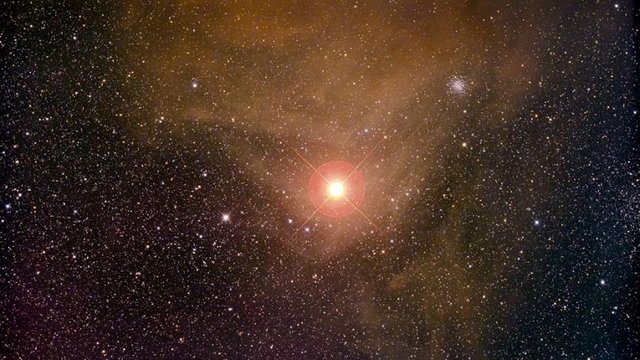
(Photo by Fred Espenak from Astropixels.com)
One thing to note for anyone living in minimal light pollution environments, if you happen to be at a latitude South of 42 degrees looking to the right of Antares will show just about as many stars in one place as you can possibly see.
Other than that, the summer time is a season of many stars, but not too many bright ones. As far as the northern hemisphere goes, 8 out of 10 of the brightest stars are Winter exclusive, this is because we actually live closer to the galactic arm we face in the winter than the summer, so more opportunity to see bright distant stars like Rigel, Betelgeuse, or Capella.
Although, one advantage the Summer sky has over the Winter sky by a long shot is the galactic band itself. During the Summer, we face right into the heart of the milky way at night, giving it a much more detailed contrasting appearance, while the best one could see from it in the Winter would be something like this.
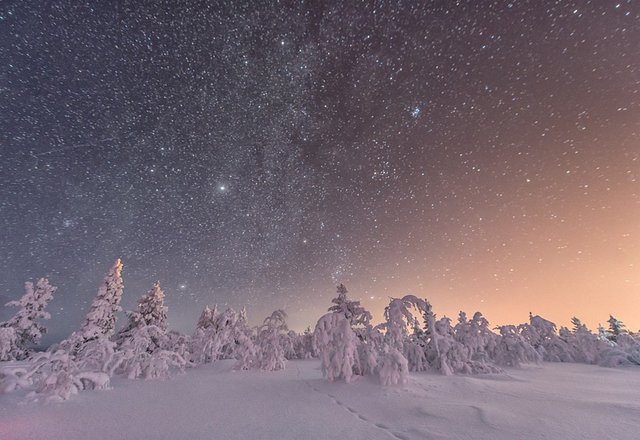
Niccolo Ubalducci (http://onebigphoto.com/amazing-winter-night-sky/)
That being said, the freezing of ice in the atmosphere makes the Winter sharper looking so, trade-offs.
-Telescope things
Time for the fun stuff, objects that our limited vision can't show us, not without a telescope for assistance that is. And the Summer has a LOT of those.
Naming them all individually would be pointless, but I'll make note of special members. Starting with one of the weirdest looking things out there; Globular clusters. These things remained an illusive set of objects for a while due to how they all seemed to come out in the summer, as it turns out, that's because they follow a different orbital path in the galaxy than anything else. Moving perpendicular to everything else, slowly making their way around an orbit that rarely crosses through the galactic plane. And since they're all interior to us, we see them only when facing into the galaxy.
The Hercules Cluster, (Messier 13) is definitely the most iconic of the Northern hemisphere, but others like Messier 5 and 22 are great looking as well.
Planetary Nebulae such as the Ring nebula inside Lyra and the Dumbell Nebula within Vulpecula, (Between Deneb and Altair), are icons of the season. I'm particularly fond of the Ring Nebula for its sharp appearance, having a definitive outline in the telescopes view.
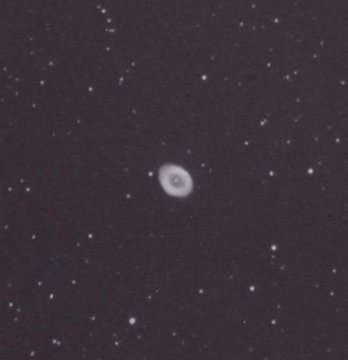
(Photo by Jim Kaler)
This image is rather akin to what it would really look like through a good telescope.
But the really fantastic parts of the Summer sky are all found within the same region; Sagittarius.
Because of its location right in front of the galaxy's core, there are a hefty amount of Stellar Nursery tier nebulae in this area.
4 to be exact, which is quite a lot. What's so cool about them is that they come in pairs, kind-of. They aren't really connected to one another in any way, but visually they're paired off.
(Both photos by Fred Espenak from Astropixels.com)

The prominent Lagoon nebula sits near the bottom while the odd Trifid nebula lies above.
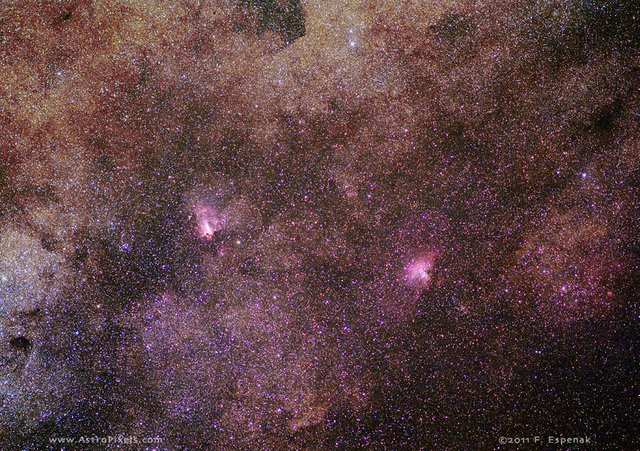
In front of and behind more Stars than one can count, the Eagle Nebula,(Right), and the Omega Nebula, (Left), churn out stars within their hydrogen red centers.
So as you can see there's a whole lot of things to be found above you right now from the hours of 9pm-2am, past that and you moved on to the Autumn sky, not nearly as wholesome, but still with some interesting stuff.
Woops, just noticed a mistake; Antares is brighter than Deneb, so I was technically wrong when I said the Summer triangle stars were the three brightest.
Great post @astronomyizfun
The sky is full of breathtaking objects
Congratulations @astronomyizfun! You have completed the following achievement on Steemit and have been rewarded with new badge(s) :
Click on the badge to view your Board of Honor.
If you no longer want to receive notifications, reply to this comment with the word
STOP